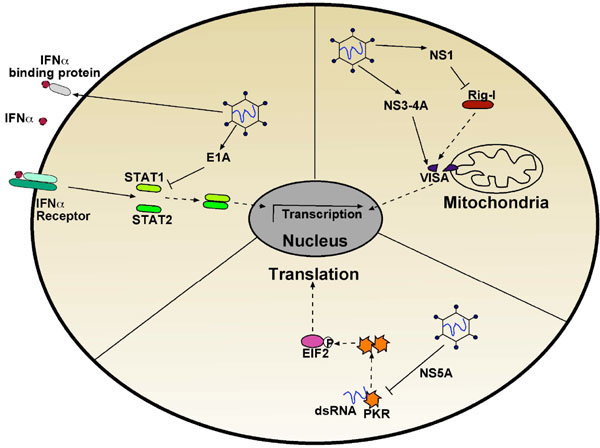Fig. (2) Viral mechanisms for evading the early innate immune response. (Dotted lines indicate inhibited steps). To avoid detection
altogether, the early signalling pathways are targets of viral attack. The NS1 and NS3-4A proteins block RIG-I and cleave VISA
respectively, preventing the transcription of interferon α and β. Signalling from the interferon α receptor is also a major target. Firstly,
soluble interferon α and β binding proteins are produced by paramyxoviruses. These sequester the ligands before they can bind to their
receptors. Direct inhibition of STAT1 by the adenoviral protein E1A also abolishes signalling from the receptor, thus blocking activation of
the type I interferon response. Antiviral proteins induced by interferon α and β are common targets of viral sabotage. The kinase PKR which
inhibits translation by phosphorylation of the translation initiation factor EIF2 is directly inhibited by binding to the viral NS5A protein,
preventing EIF2 phosphorylation and allowing viral proteins to be translated.


